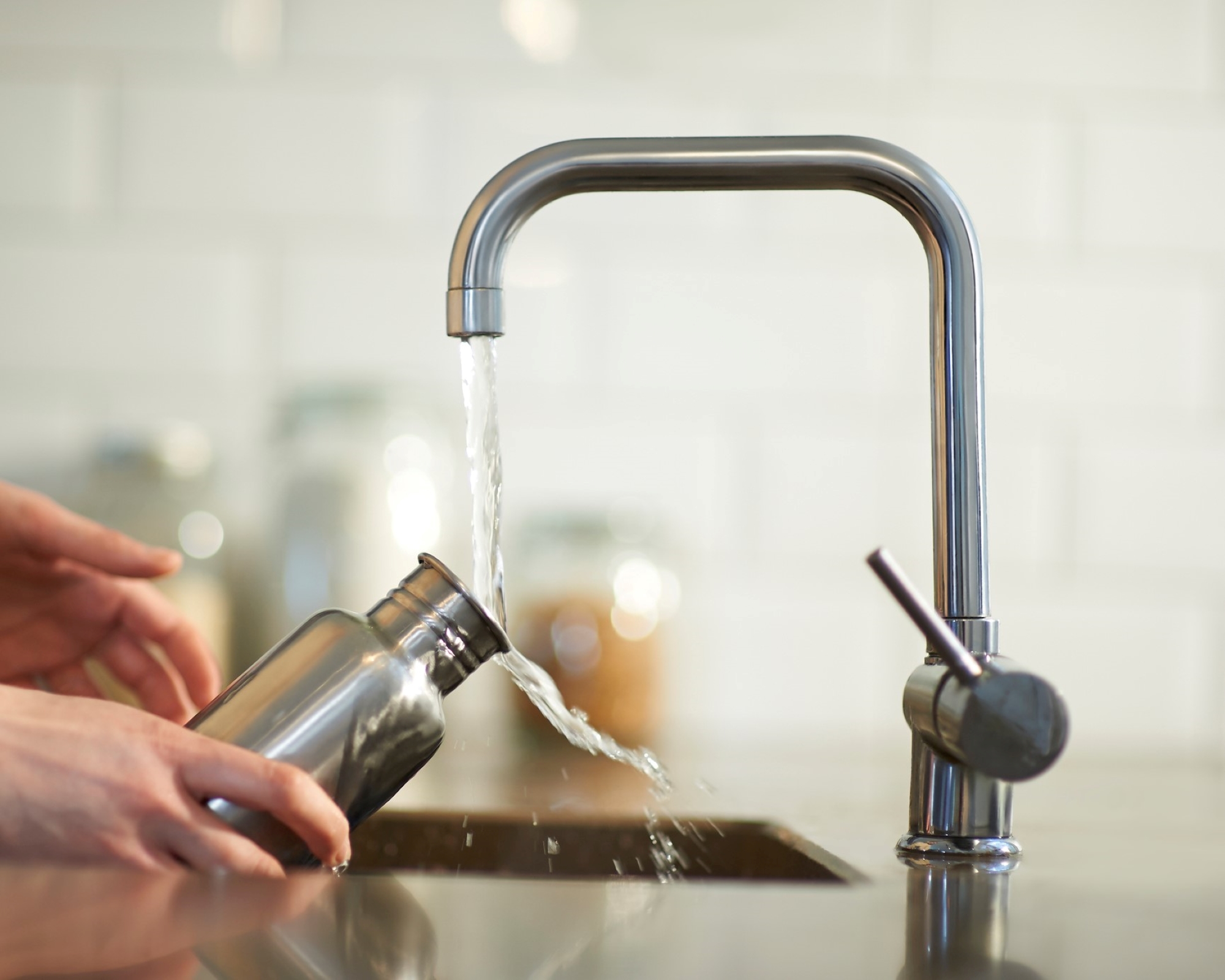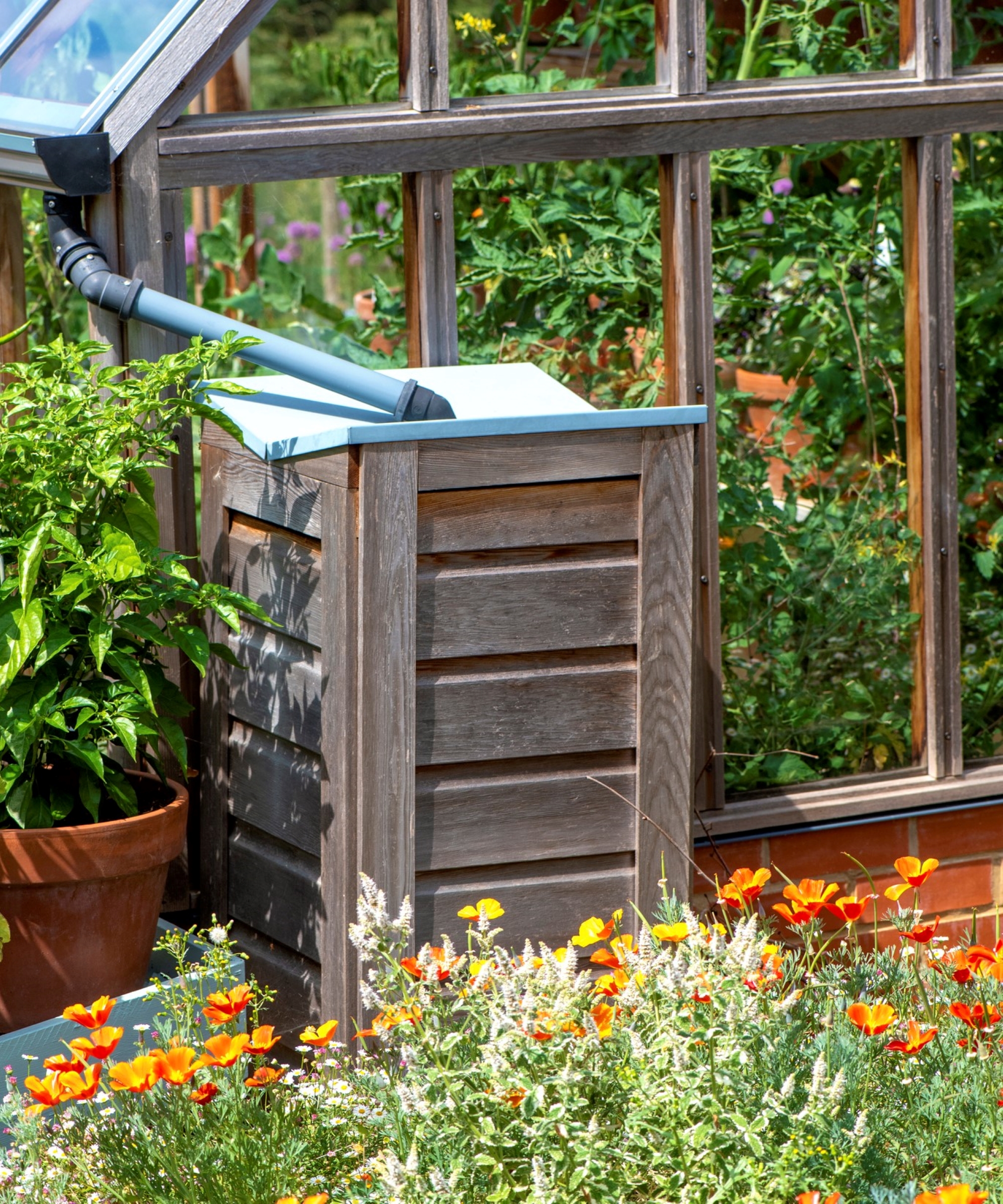11 ways to save water at home: inside and out in the garden
Saving water at home is more important than ever; here are the top tips for reducing your water consumption both inside your home and out in your garden and backyard

Learning how to save water at home is more important than ever; so we want to share top tips for reducing your water consumption both inside your home and out in your garden and backyard
These ways to save water at home will help you reduce the amount of water you use. There are benefits to saving water both to you and the environment. Firstly, water use is metered in many areas, so the less you use the less you have to pay for it. Secondly, water is becoming a scarce resource in many areas of the world as the climate gets warmer, so using less for your household and gardening needs makes more of this precious resource available for emergencies like droughts and wildfires.
Of course, using less hot water for bathing, dishwashing and laundry is also an important way to save energy at home. Even adopting just a few of the clever tips below will help you achieve lower bills and a more sustainable level of water use.
1. Install water-saving plumbing and appliances
This doesn’t have to be a complete overhaul of your plumbing, but a water-saving shower head (which you can buy from Amazon) and a couple of new appliances – the best dishwasher and best washing machine, to start – will make a real difference to how much water you use. Don’t forget to only run both appliances when they’re full.
Amber Rogers, an Environmental Scientist and Founder at mychickenguide.com, recommends looking for appliances ‘with a high water efficiency rating.’ In terms of shower heads, some places (California, for example) now require you to have water-efficient ones by law, so check what requirements there are where you live. And check out the best high pressure shower heads if low pressure means you are using more water than you need.
2. Take a short shower instead of a bath
We’re not saying ‘never take a bath again’ (life wouldn’t be worth living, right?). But the truth is a short shower, ‘under five minutes’, according to Rogers, uses a lot less water than a typical bath. We’re talking five times less. Do that on most days and then treat yourself to a bath when you really need one.

3. Use your laundry water to water your lawn (if you can)
Rogers explains the way this works: ‘I hook up my washing machine to a flexible drainage hose and run it out through my laundry onto my lawn to recycle the washing machine grey water.’
Get small space home decor ideas, celeb inspiration, DIY tips and more, straight to your inbox!
Using grey water isn’t allowed in all areas, so ‘check your local council rules before doing this.’ You can also save dishwater when you hand wash.
4. Don’t let water run unnecessarily
Letting your faucet run while you’re brushing your teeth/cleaning the kitchen is a waste of water. It can take a while to change the habit of letting the water running, but it’s definitely worth retraining yourself to help conserve water.

5. Use water from your coffee machine to water your houseplants
This brilliant hack comes curtesy of our deputy editor, Camille Dubuis Welch, who says: ‘I use old water from my coffee machine, which is even better for tropical plants as it's room temperature.’
You can do the same if you pour a glass of water you don't drink or overfill your kettle (just let it cool first).
6. Plant native plants in your backyard
There is a very simple rationale behind choosing plants native to your area. Jeremy Yamaguchi, gardening expert and CEO at Lawn Love, says: ‘plants that are designed for other climates – specifically climates that are naturally more humid, wet, or cooler – are going to require much more water to survive. When you choose native plants that are accustomed to the temperature, humidity, and level of rainfall that you get naturally, you won’t have to water them excessively.’
7. Rethink your landscaping
‘You can also save water by choosing landscaping features that don’t require water’, Yamaguchi continues. Explore rock garden ideas or xeriscaping instead of going for the traditional lawn-and-borders backyard design. You can still have a smaller area of grass if you like, but it won’t require all that much water.

8. Mulch as early in the season as you can
Mulching is crucial for helping your garden hold on to moisture. Marjorie Beausoleil is an expert gardener and the founder of Ethos Seed Company, a small seed provider focusing on rare heirloom varieties of flowers and vegetables, located in Connecticut. She recommends applying ‘deep mulching as early in the season as possible.
'You can use a variety of mulches around vegetable gardens, but my favorite are grass clippings and chopped straw (just make sure the straw is fit for mulching and does not contain noxious weed seeds!).’
9. Increase the organic content of your soil
Learning how to make compost can help you save water in the garden, and that’s a fact. Beausoleil says: ‘The organic matter will naturally increase the water retention of your soil while also feeding the worms, insects, fungi, and bacteria that make a healthy soil's natural ecosystem. High-quality compost, either purchased or home-made, is the best and should be applied at both the beginning and the end of the season.’
10. Water your garden correctly
Contrary to the popular myth of not watering your garden during lunchtime (nope, it doesn't scorch your plants but may evaporate quicker), saving water is all about the correct watering technique. Joanna VonBergen, the blogger and gardener behind the popular gardening blog, Gingham Gardens, reminds gardeners that plant roots need the water, not necessarily the plant foliage. If you water by hand, use a wand type nozzle for your hose and water at the base of the plants. Rather than using an overhead sprinkler, take the time to install a simple drip irrigation system, or soaker hose.’

11. Install a rain barrel
Last but not least, installing a rain barrel will go a long way to reducing your overall water use in the garden. Go for the largest you can afford/fit in your backyard; it really is worth it. And – not all rain barrels are ugly, some are actually quite well-designed. Why not hack one from an old animal trough, beer keg or other large container for an affordable industrial look.
y
You could double up the clever water additions by removing your down spout and adding a rain chain instead.
What appliance uses the most water in the home?
It’s the toilet (sorry). While there’s not much we can do about how much we flush the toilet, we can save water by installing a two part flush that uses less water for *ahem* smaller deposits.
Also try taking shorter showers instead of baths (second by water consumption), and only running the washing machine (third on the list) when it’s full and preferably on a water-saving cycle.
Which garden plants use the most water?
We hate to say it, but if you’re planning a kitchen garden, many of the crops you’ll be growing in there are water-intensive crops. Legumes (peas and beans), tomatoes, zucchini, cucumber and sweet potatoes all require large quantities of water while getting established, or they won’t produce.
If you want to save as much water as possible, you may consider growing perennial drought-tolerant plants instead of a full-scale veggie garden.
Anna is a professional writer with many years of experience. She has a passion for contemporary home decor and gardening. She covers a range of topics, from practical advice to interior and garden design.